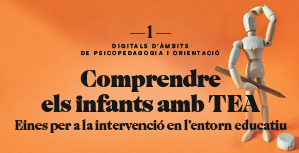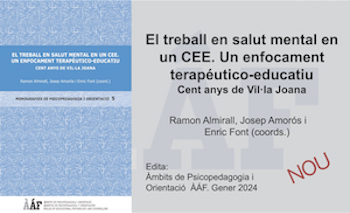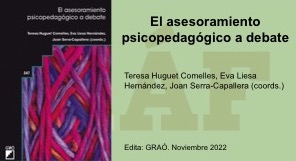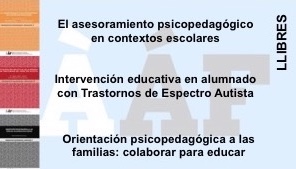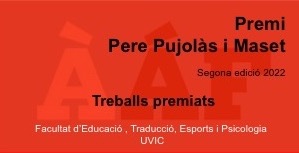Basic concepts on transexuality
DOI:
https://doi.org/10.32093/ambits.vi53.2638Keywords:
Tran sexuality, gender dysphoria, Social, Family, Psychology, Support and psychological counselling.Abstract
The basic concepts are essential to any subject to be dealt with or with which we live; if, in addition, the lack of information, or the handling of inadequate information, entails serious individual and social consequences, it is of great interest to work on it. As social beings, we live with more realities than our own, so knowledge will help good understanding and promote good coexistence. When I work on transsexuality as a psychologist or teacher, I find a great information gap on the part of the listener, as well as interest and surprise as we progress in the matter. For this reason, I always start with the exposition of basic concepts, and in this article I hope to be able to make a small contribution in this regard.
The difference between the concepts of sex and gender is basic for the understanding of transsexuality, and in the same way, we need adequate information about this concept. Gender as a social construction is not universal in nature; it differs in different cultures, over time and even according to different personal experiences. Diversity is a reality, and adequate knowledge of the basic concepts will help us in well-informed decision making and understanding them, avoiding serious consequences. Both for professionals (health, educational, social, etc.) and on a personal and social level, I believe the understanding of diversity is of great relevance; Certain concepts such as "transsexuality", "gender dysphoria" or "transphobia" are basic and their lack of information, or inadequate information, can lead to serious avoidable consequences.
References
American Psychological Association-APA (2015). Guidelines for Psychological Practice With Transgender and Gender Non conforming People. Disponible en:
http://www.apa.org/pi/lgbt/resources/index.aspx?tab=6
Belge, K. y Bieschke, M. (2015). Queer. La guía LGTB para adolescentes. Mexico: D.R.
Bergero, T., Cano, G., Giraldo, F. Esteva, I., Ortega, MV, Gómez, M et al. (2004). La transexualidad: asistencia multidisciplinar en el sistema público de salud. Revista asociación española de neuropsiquiatría, 24(89), 9-20.
Butler, J. (1990). El género en disputa. El feminismo y la subversión de la identidad. México: Paidós. (Aniversario: 1999).
Chase, C. (1998). Hermaphrodites with attitude: mapping the emergence of the intersex political activism. Journal of lesbian and gay studies, 4(2), 189-211.
Errespetuz Asociación Vasca para la Defensa y la Integración de las personas transexuales (2010). Evolución histórica de la transexualidad. Disponible en:
http://errespetuz.blogspot.com.es/2010/12/evolucion-historica-de-la.html
Fausto-Sterling, A. (2000). Sexing the body. Nueva York: Basic Books.
Fernández, M. (2010). Una aproximación a la transexualidad desde la doble realidad sexo/género. Avilés: Ediciones Azucel.
Fernández, M. Guerra, P. Díaz, M. y Grupo GIDSEEN (2014). La disforia de género en la infancia en las clasificaciones diagnósticas. Cuadernos de medicina psicosomática y psiquiatría de enlace, 110, 25-36. Disponible en:
http://www.cuadernosdemedicina.com/download.php?idart=593
Fernández, M. Guerra, P., Martín, E. y Grupo GIDSEEN (2016). Reflexiones en torno al marco epistemológico de la disforia de género. Revista Española Salud Pública, 90, 1-4. Disponible en:
https://www.scielosp.org/article/resp/2016.v90/e10002/
García-Sagarzazu, A., Fernández, M. y Guerra, P. (2016). La disconformidad con el género. Revista de sexología, 5(1), 43-45
Jeffreys, S. (2003). Unpacking queer politics: a lesbian feminist perspective. Cambridge: Polity.
Lara, E. (2010). Apuntes sobre la categoría género desde una lectura antropológica. Teoría y praxis, 17. Disponible en:
http://rd.udb.edu.sv:8080/jspui/handle/11715/781
López Sánchez F. (2013). Identidad sexual y orientación del deseo en la infancia y adolescencia. En AEPap ed. Curso de Actualización Pediatría (pp. 209-25). Madrid: Exlibris Ediciones.
Mackenzie, G.O. (1994). Transgender nation. Ohio: Bowling Oreen State Univesity Popular Press.
Martín, A (2006). Antropología del género: culturas, mitos y estereotipos sexuales. Universidad de Valencia.
Mead, M. (1973). Sexo y temperamento en tres sociedades primitivas. Barcelona: Editorial Laia.
Money, J. y Ehrhardt, A. (1972). Man &woman – boy&girl. Baltimore: Johns Hopkins University.
Observatorio de Derechos Humanos y Derecho Internacional Humanitario (2017). Orientación sexual, identidad de género y derechos humanos. Colombia: Consejería de derechos humanos. Disponible en
http://www.derechoshumanos.gov.co/observatorio/publicaciones/Documents/2017/170213-plegable-lgbti.-webpdf.pdf
PsicoQ. (5 de marzo de 2012). La Mente en Pañales. Educación diferenciada entre niños [Archivo de Vídeo].
Youtube. https://www.youtube.com/watch?v=7hBX7YUAx2I
Real Academia Española. (s.f.). Género. En Diccionario de la lengua española. Recuperado en 26 de septiembre de 2020, de https://dle.rae.es/g%C3%A9nero?m=form
Rodríguez, R. (2001). Análisis antropológico de la transexualidad, entre la realidad cultural y la resistencia social. Anuario de filosofía, psicología y sociología, 4-5, 239-248. Disponible en
https://acceda.ulpgc.es/bitstream/10553/3583/1/0237190_02001_0014.pdf
The World Professional Association for Transgender Health-WPATH (2011). Standards of Care for the Health of Transsexual, Transgender, and Gender Non conforming People, 7ª version. Disponible en
https://www.wpath.org/publications/soc
UNFPA-Ministerio de Educación Nacional de Colombia- (2016). Ambientes escolares libres de discriminación. Colombia: Ministerio de Educación Nacional y el Fondo de Población de las Naciones Unidas.
Vendrell, J. (2012). Sobre lo trans: aportaciones desde la antropología. Cuicuilco, 54. Disponible en http://www.redalyc.org/pdf/351/35126359008.pdf
World Health Organization-WHO (Organización Mundial de la Salud-OMS) (1978). Clasificación Internacional de Enfermedades. 9ª ed. Ginebra: WHO. (trad. cast.: Madrid: Meditor, 1978).
World Health Organization-WHO (Organización Mundial de la Salud-OMS) (2015). Género. Nota descriptiva N°403. Disponible en
http://www.who.int/mediacentre/factsheets/fs403/es/

Downloads
Published
Issue
Section
License
The authors maintain their copyright and give the right to the first publication of the work to the journal, registered under a Creative Commons Attribution-Non Commercial-NoDerivs license. This license allows others to download the works and to share them with others as long as they credit the author, but it does not allow for any kind of modification or commercial use.


